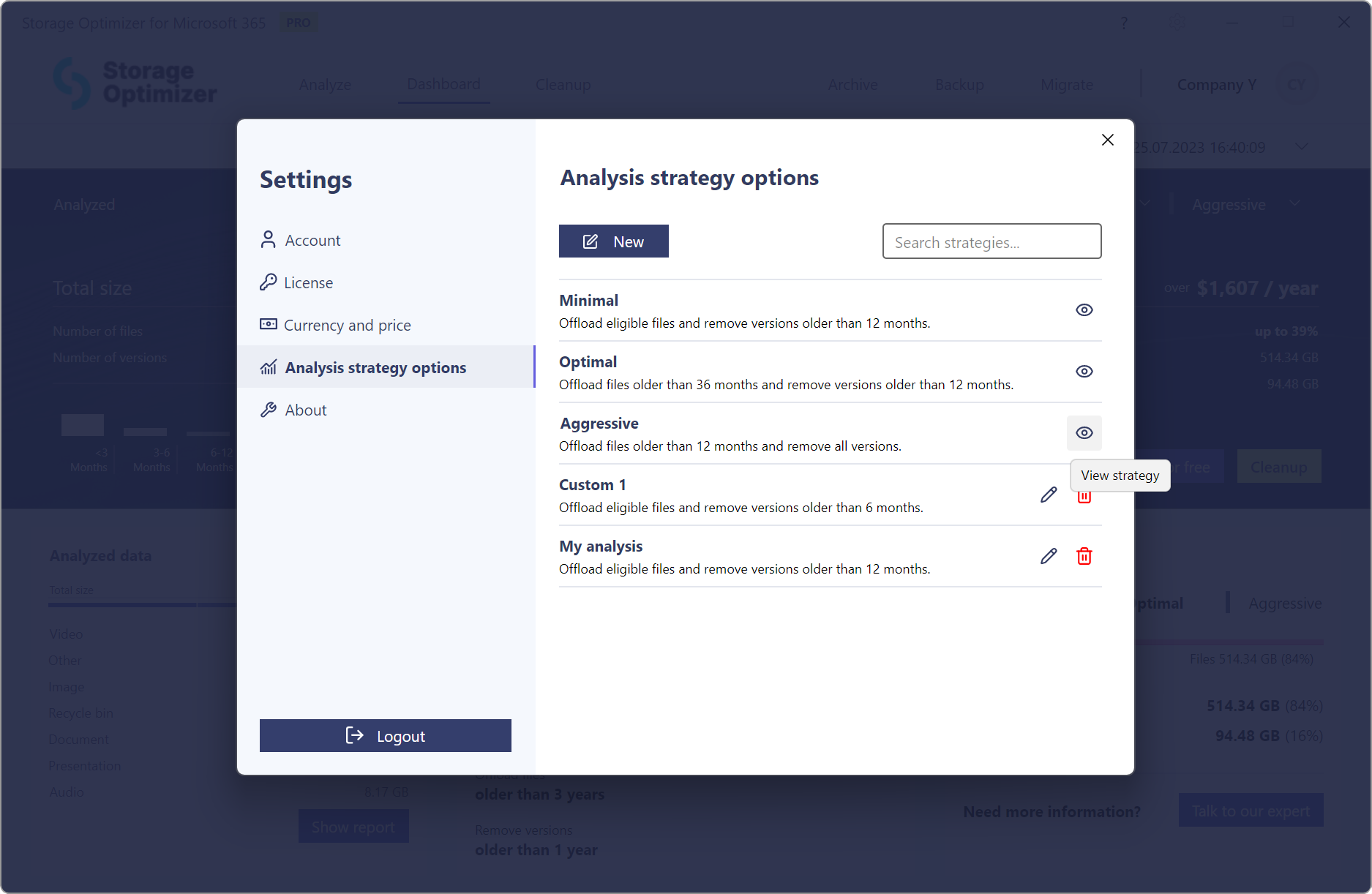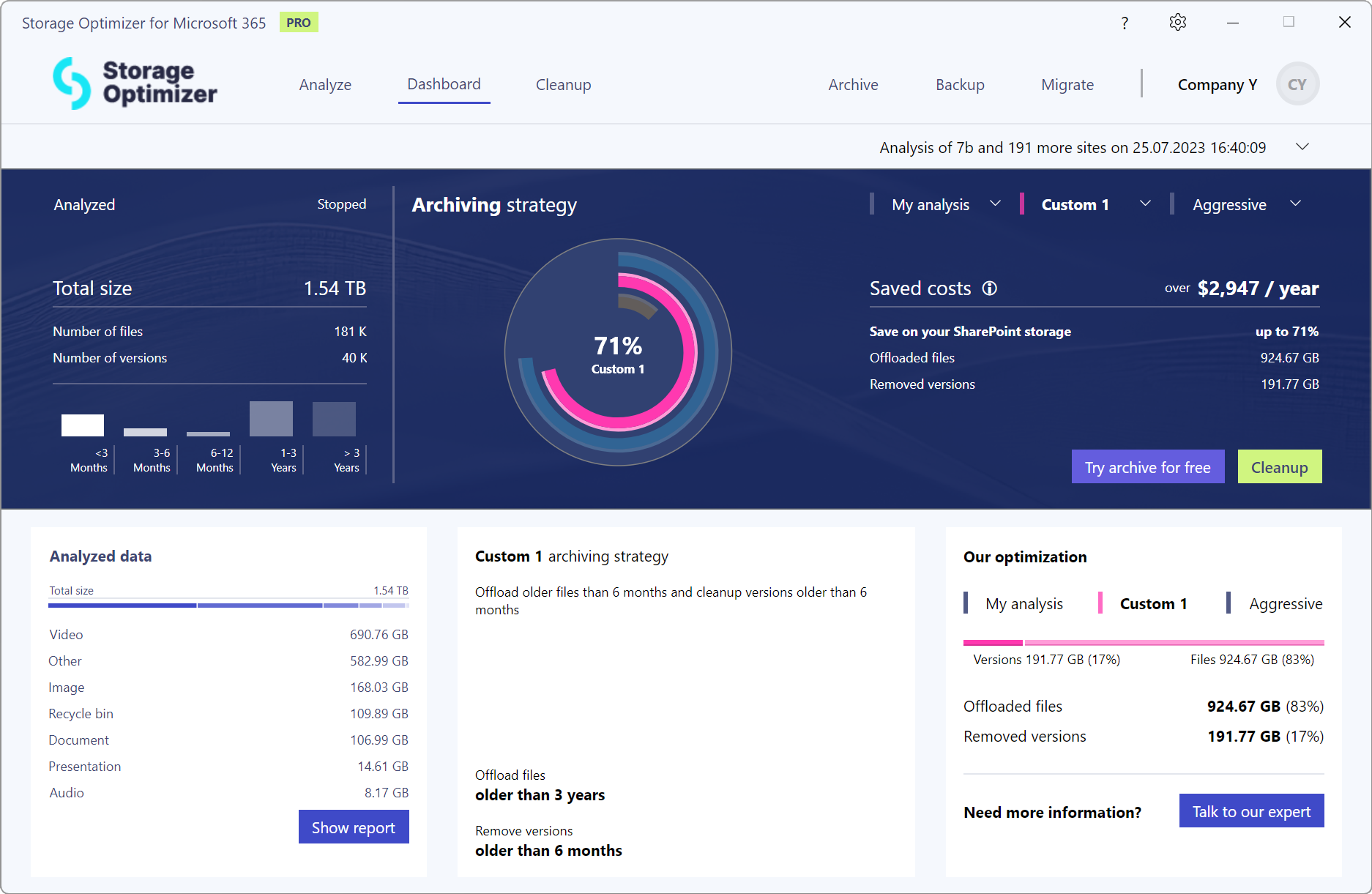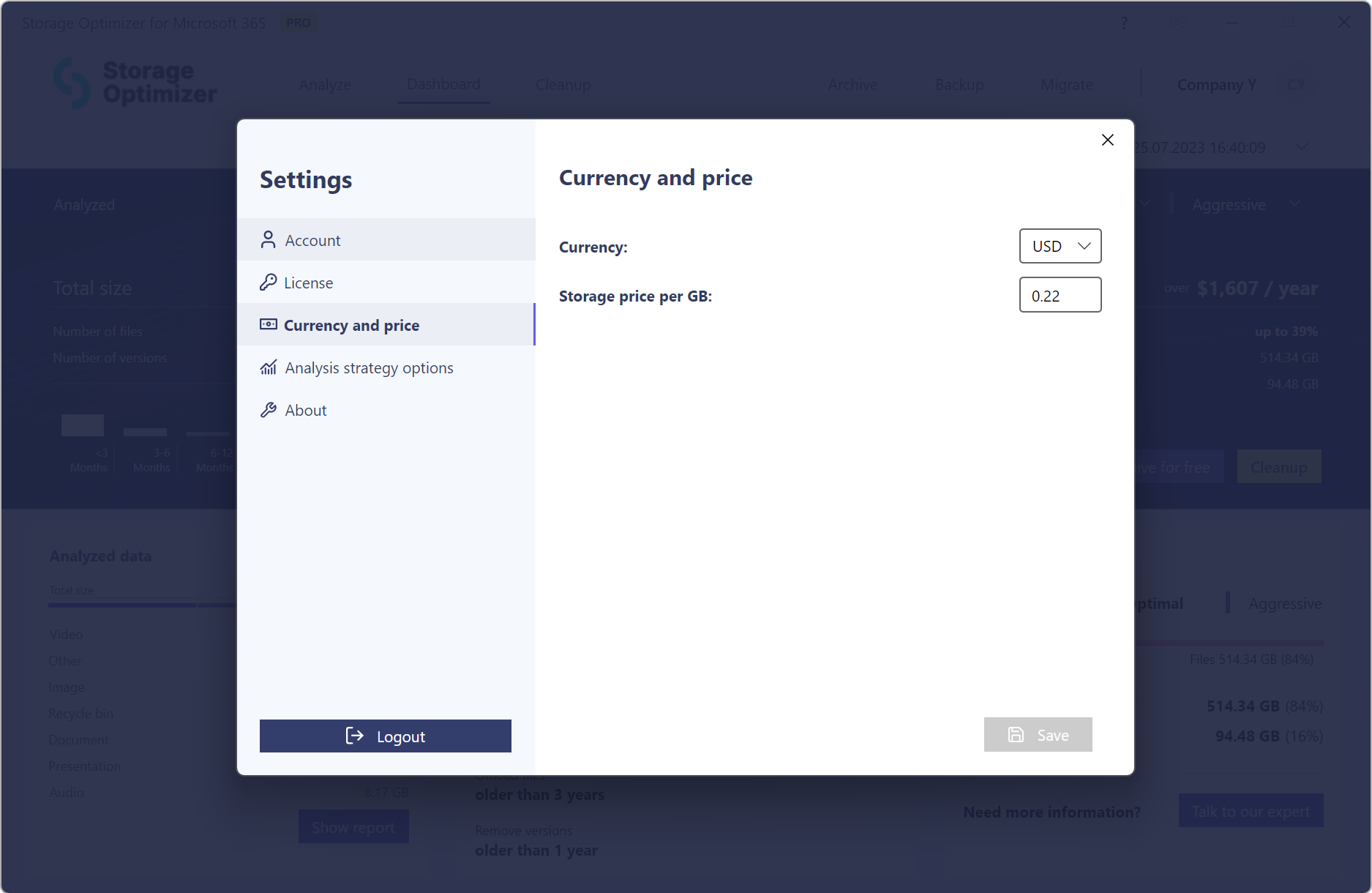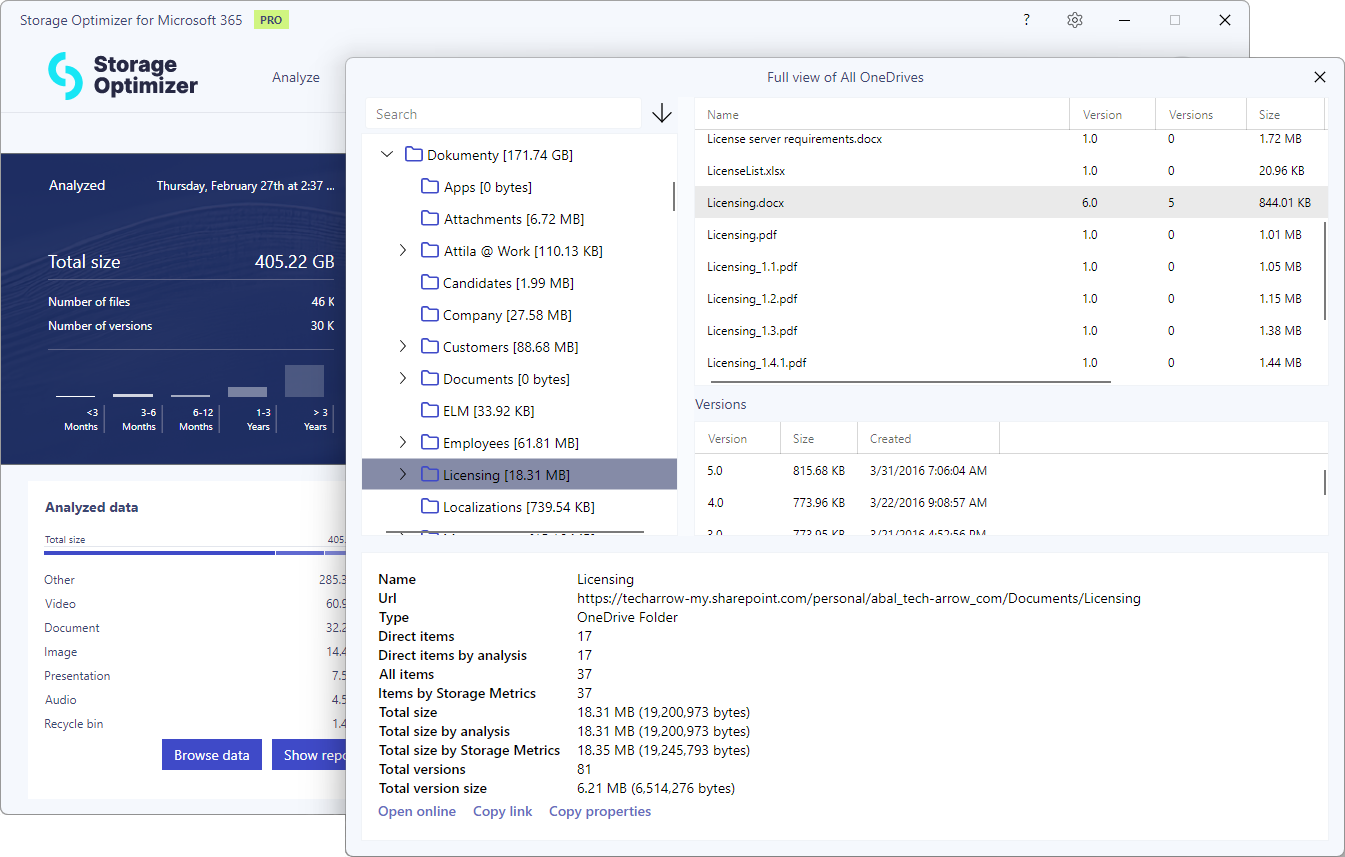For the list of all release notes click here.
The following list will give a quick overview about the newest improvements that Storage Optimizer version 3.0 brings to you:
Application
✓ Custom analysis settings
This release brings one of the most powerful improvements to Storage Optimizer to date: Custom Analysis Settings. In previous versions, optimization analysis was limited to three predefined strategies — Minimal, Optimal, and Aggressive — which provided general guidance but didn’t always match the unique needs or data policies of each organization.
Now, you have full control. With custom analysis settings, you can create your own optimization rules and let Storage Optimizer calculate the potential cleanup impact and cost savings based on your specific criteria. You can define how old a file must be before it qualifies for offloading or deletion, and you can set separate thresholds for outdated file versions. This level of customization makes it possible to model your internal data retention policies or simulate different strategies before taking action.
Once your custom rules are defined, Storage Optimizer will present you with a detailed overview of how much storage you could reclaim and how much money you could save if the rule were applied.


✓ Currency selection
Until now, Storage Optimizer displayed all pricing-related data — such as storage costs and potential savings — exclusively in euros. While this was suitable for some users, it didn’t align with the needs of organizations operating in countries with different local currencies.
With this release, we’re introducing a flexible currency selection option. Users can now choose their preferred currency from a predefined list, and Storage Optimizer will display all cost-related values accordingly. This makes cost analysis more intuitive, improves internal reporting alignment, and supports better budgeting and decision-making at the regional level.

✓ Custom storage price
In earlier versions, Storage Optimizer used a fixed Microsoft 365 storage price of 0.20 EUR/GB/month when calculating potential savings. While this default value provided a general estimate, it didn’t reflect the actual costs for many organizations, especially those with volume-based or discounted pricing models.
With the new release, Storage Optimizer introduces the ability to define your own custom storage price per gigabyte. This means the savings calculations will now match your organization’s real pricing structure, ensuring accurate and meaningful reports. Whether you pay less due to an enterprise agreement or have specific rates in different regions, you can now adjust the value to reflect your actual costs.

✓ Data browser
The new Data Browser provides a deeper insight into the structure and content of your Microsoft 365 storage. It allows users to explore analyzed SharePoint sites and drill down to document libraries, folders, and even individual files. At each level, the browser displays key storage metrics, including total size, number of files, and the space taken up by versions. This detailed visibility helps users identify where storage is being consumed and which content contributes the most to overall usage.

✓ Admin approval support
Storage Optimizer integrates with SharePoint by registering an Azure application in the customer’s Microsoft 365 tenant. This application requires certain permissions to access and analyze SharePoint data. Previously, the user setting up Storage Optimizer needed to have global admin rights to consent to these permissions, which posed challenges in environments where IT responsibilities are separated and users lack the required privileges.
With the new release, Storage Optimizer introduces support for the admin approval request flow. If a user without sufficient rights attempts to register the application, the system now allows them to initiate the process and send a permission approval request to a global administrator. Once the admin reviews and grants the necessary consent, the user can begin the M365 storage analysis.
This update makes Storage Optimizer more flexible in enterprise environments, where administrative privileges are often restricted and must go through formal approval processes.
✓ Faster processing
Over the past year, we’ve collaborated closely with our customers to optimize our analysis process. The result is significantly faster data analysis and cleanup speeds. With these improvements, you can now analyze and manage your data more efficiently, saving valuable time and resources.
Documentation
Please check the updated documentation and manuals.


